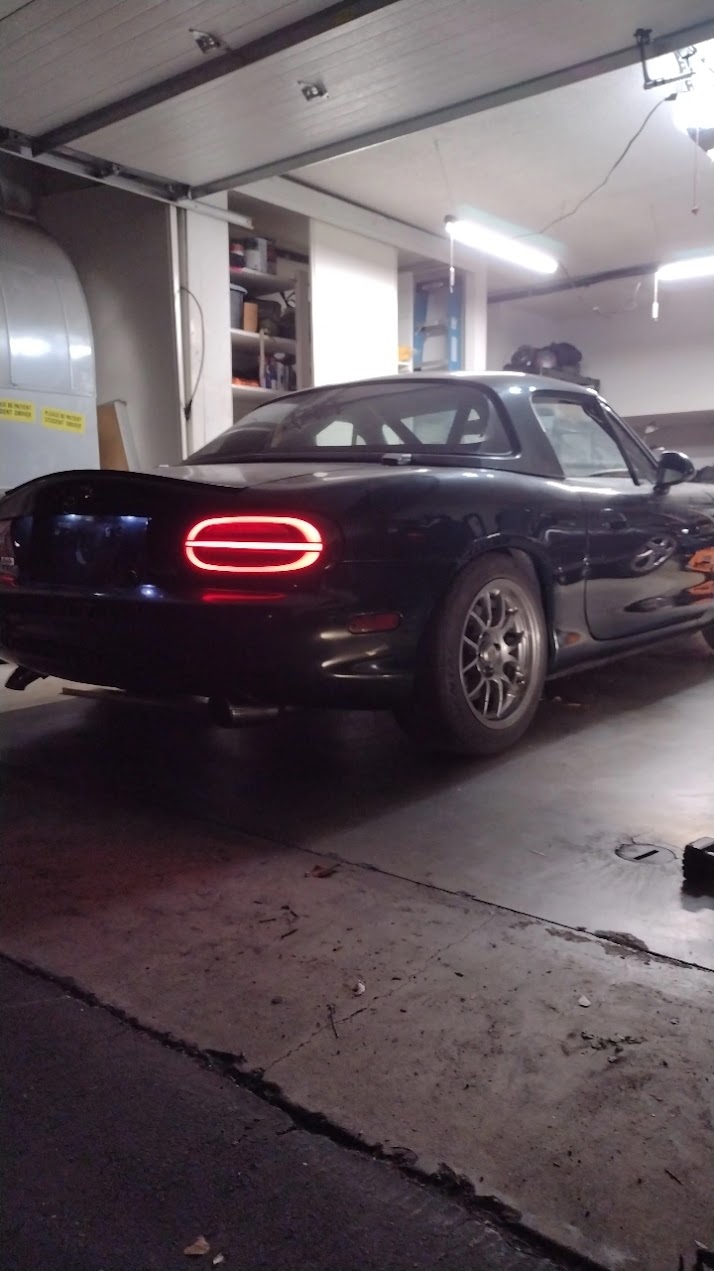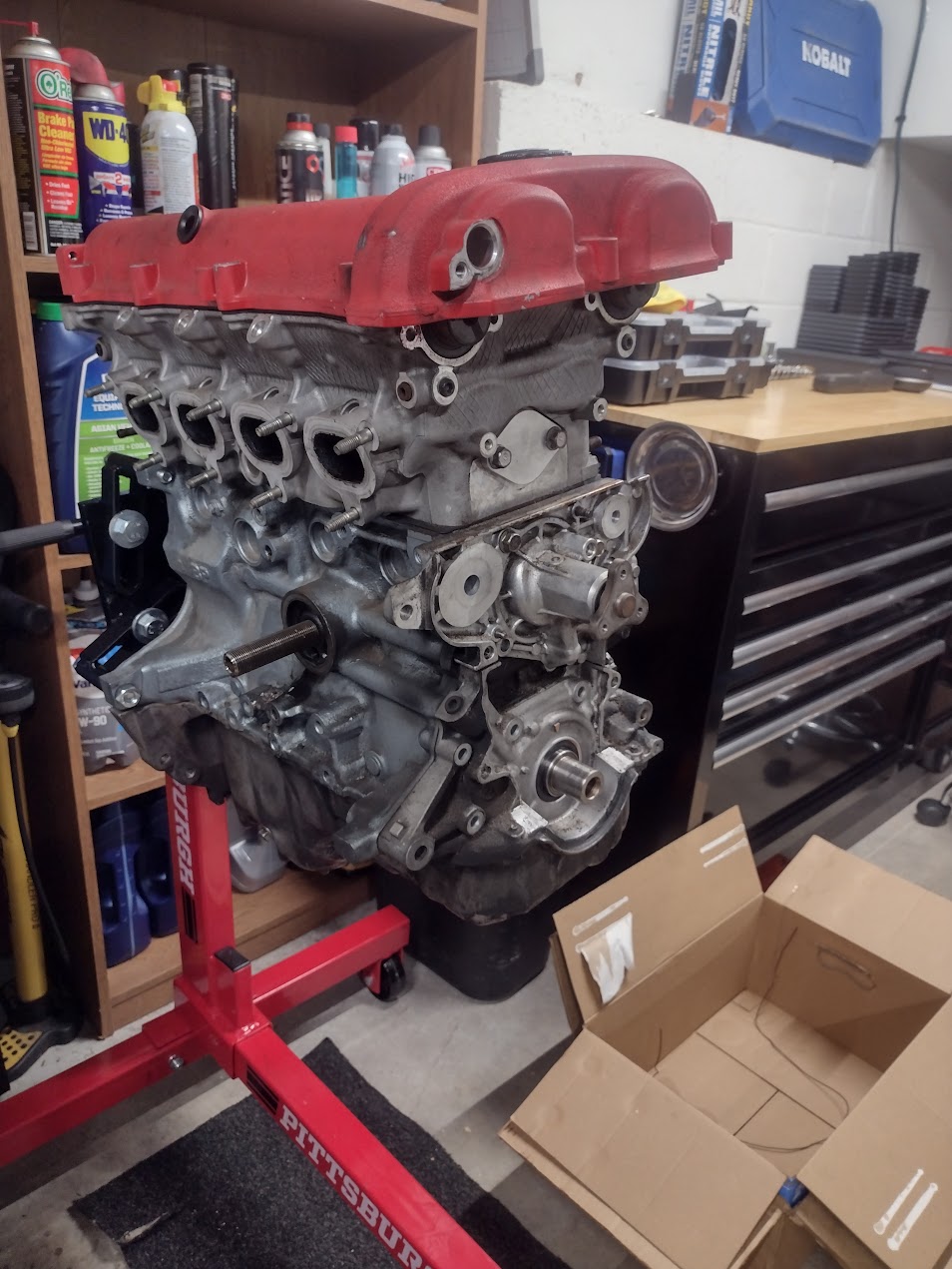engine rebuild - choosing internal specs for future forced induction plans?
#1
I blew the motor in my 99 recently, and am currently rebuilding it for my first time ever. I will preface by saying money and time are not a large concern for me. I picked up a 92 miata for fairly cheap as a daily driver, and very much enjoy learning how to do as much as I possibly can myself.
I have intentions to turbo the motor in the future, although would like to stay naturally aspirated for about another year (I'd like to enjoy the NA form a little longer, and want to get comfortable learning standalone tuning first)
Regardless, I would like to prepare the motor for forced induction so I don't have to tear it apart again in a year or 2, even though I'm sure I'll enjoy it as much as I am right now. My short and long term plans are to boost it, initially aiming for 200-230whp. Then slowly ramp up to mid to high 300s as i get comfortable with the power. I don't have any intentions to go over 20psi of boost, 400whp or high revving, seeing as this car will be driven by 4 wheels eventually sometime before I die. I'd like it to be a fun street car/very capable on the track (only a handful of times a year most likely)/and good looking for the events and car shows. Multipurpose call it. Comfort is not a concern for me as the car is already gutted and running poly control arm/diff/engine bushings. The NVH makes me feel more connected to the car and road (which I'm sure will just give me a headache in the next couple of years)
Anyways... the meat of my current build sheet includes:
My main question and concern is regarding internal clearances, for example piston-to-wall and ring gap clearances. I am aware manufactures will recommend different specs for their product depending on your specific application (naturally aspirated/low boost/high boost/daily/track car). If I know I plan on staying NA for a little longer, when assembling the engine do I follow:
Thank again! Here's some pictures of muh baby


I have intentions to turbo the motor in the future, although would like to stay naturally aspirated for about another year (I'd like to enjoy the NA form a little longer, and want to get comfortable learning standalone tuning first)
Regardless, I would like to prepare the motor for forced induction so I don't have to tear it apart again in a year or 2, even though I'm sure I'll enjoy it as much as I am right now. My short and long term plans are to boost it, initially aiming for 200-230whp. Then slowly ramp up to mid to high 300s as i get comfortable with the power. I don't have any intentions to go over 20psi of boost, 400whp or high revving, seeing as this car will be driven by 4 wheels eventually sometime before I die. I'd like it to be a fun street car/very capable on the track (only a handful of times a year most likely)/and good looking for the events and car shows. Multipurpose call it. Comfort is not a concern for me as the car is already gutted and running poly control arm/diff/engine bushings. The NVH makes me feel more connected to the car and road (which I'm sure will just give me a headache in the next couple of years)
Anyways... the meat of my current build sheet includes:
- 84mm forged wiseco 9:1 pistons
- Forged manley rods
- ACL race bearings
- ARP main/head bolts
- Possible valvetrain upgrades (undecided)
- Slight head porting (to clean up casting lines and harsh angle near valve channel)
My main question and concern is regarding internal clearances, for example piston-to-wall and ring gap clearances. I am aware manufactures will recommend different specs for their product depending on your specific application (naturally aspirated/low boost/high boost/daily/track car). If I know I plan on staying NA for a little longer, when assembling the engine do I follow:
- boost specs
- choose a middle ground
- naturally aspirated specs, aka don't even build the motor for boost yet and tear it down yet again when I am ready
Thank again! Here's some pictures of muh baby
Last edited by spencer.n_; 02-27-2024 at 01:39 PM.
#2
The main question is: Will this be an E85 car?
Bearing clearance what mazda says, ring gap whatever the piston manufacturer says. Do a line hone, when using ARP mains. You want an aftermarket crank dampener, if the car sees track duty.
Stiffer valve springs are a good idea. Boundary oil pump gears...
Doesn't matter, if you run it NA, if you have a standalone ECU. Just build completely for boost
Bearing clearance what mazda says, ring gap whatever the piston manufacturer says. Do a line hone, when using ARP mains. You want an aftermarket crank dampener, if the car sees track duty.
Stiffer valve springs are a good idea. Boundary oil pump gears...
Doesn't matter, if you run it NA, if you have a standalone ECU. Just build completely for boost
#3
My main goal with this rebuild is to make myself as prepared as possible for whatever might come in the future (and as beefy as possible for some peace of mind). I know I'll be very boost hungry once I get a small taste. I do plan on being able to run E85, although it won't be my main priority until later down the road. What should I prepare for when it comes to E85? besides the regular upgraded injectors, fuel rail, pump etc. I'm simply prioritizing what I won't be able to reach once the engine is back in the car.
The car already has a FM coolant reroute, and a mishimoto radiator. Ill be doing some more turbo prep overtime after it's back in (custom catch can setup/oil cooler if absolutely necessary/upgraded clutch etc)
Ill give a more complete build sheet to paint a better picture:
Parts:
And lastly, how important will balancing the entire rotating assembly be regarding everything I've already mentioned. Anything else I'm missing or should look into?
Thanks again, I appreciate any help
The car already has a FM coolant reroute, and a mishimoto radiator. Ill be doing some more turbo prep overtime after it's back in (custom catch can setup/oil cooler if absolutely necessary/upgraded clutch etc)
Ill give a more complete build sheet to paint a better picture:
Parts:
- ACL main/rod/thrust bearings
- manley rods
- wiseco pistons
- ARP main/head bolts
- Stage 1 boundary pump
- ATI or Fluidampr (haven't decided yet)
- possible valvetrain upgrade
- inconel 1mm oversize valves
- supertech valve springs
- All OEM seals/gaskets/water pump etc
- Turbo prep
- tapping and capping oil pan with -10AN fittings
- opening up PCV ports inside valve cover baffles, and tapping -10AN fitting for future catch can setup
- bore to 84mm
- line hone
- deck just to clean crap off block and head
- basic porting and valve job
- polish crank and cams
And lastly, how important will balancing the entire rotating assembly be regarding everything I've already mentioned. Anything else I'm missing or should look into?
Thanks again, I appreciate any help
#4
My preference would be the ST pistons over the wiseco's because of the lower expansion rate of the 4032 alloy vs the 2618. Regardless of which piston you use I recommend deburring the sharp edges (valve reliefs etc) and have the tops ceramic coated. If the crank has some signs of wear, have it ground. The best option for an oil pump would be boundary gears in a new oe 2001+ pump. Buying internal engine parts can be tough because of availability. I would start with pistons & rings because they will be needed for machining the block. Factory clearances for the mains are ok, but the rods I would open them up a little. The piston to wall clearance needs to be larger than what the piston mfg'ers recommend, especially for the 2618 pistons. Keep the oil squirters.
#5
Thanks for the extra information. After doing some more digging I think I'm gonna go with the supertech pistons. If I did chose wiseco it would probably only be the Flyin Miata ones, but they're a little more pricey and not in stock until late april. Does the machine shop really need the piston rings, or is that just so I don't have to grind them down myself where needed? And what are your thoughts on skirt coatings? Worried they might wear off over time and leave me with a little more piston to wall clearance than I'd like.
#6
If cost is an issue I would opt for the ceramic crown coating before the skirt coatings. Some skirt coatings reduce the ptw clearance so as they wear the clearance is still acceptable. Usually they wear to the peaks of the surface finish early in use, so it is basically a zero build. There are hard coatings of alumina that do not wear and the bore is increased to match the larger piston diameter. I don’t like the fm option because they are coated without being deburred. The sharp edges need to be smoothed. This is especially important for FI applications.
Thanks for the extra information. After doing some more digging I think I'm gonna go with the supertech pistons. If I did chose wiseco it would probably only be the Flyin Miata ones, but they're a little more pricey and not in stock until late april. Does the machine shop really need the piston rings, or is that just so I don't have to grind them down myself where needed? And what are your thoughts on skirt coatings? Worried they might wear off over time and leave me with a little more piston to wall clearance than I'd like.
Last edited by LeoNA; 03-02-2024 at 03:43 AM.
Thread
Thread Starter
Forum
Replies
Last Post
GhettoPistachio
Engine Performance
27
05-10-2019 12:06 AM












